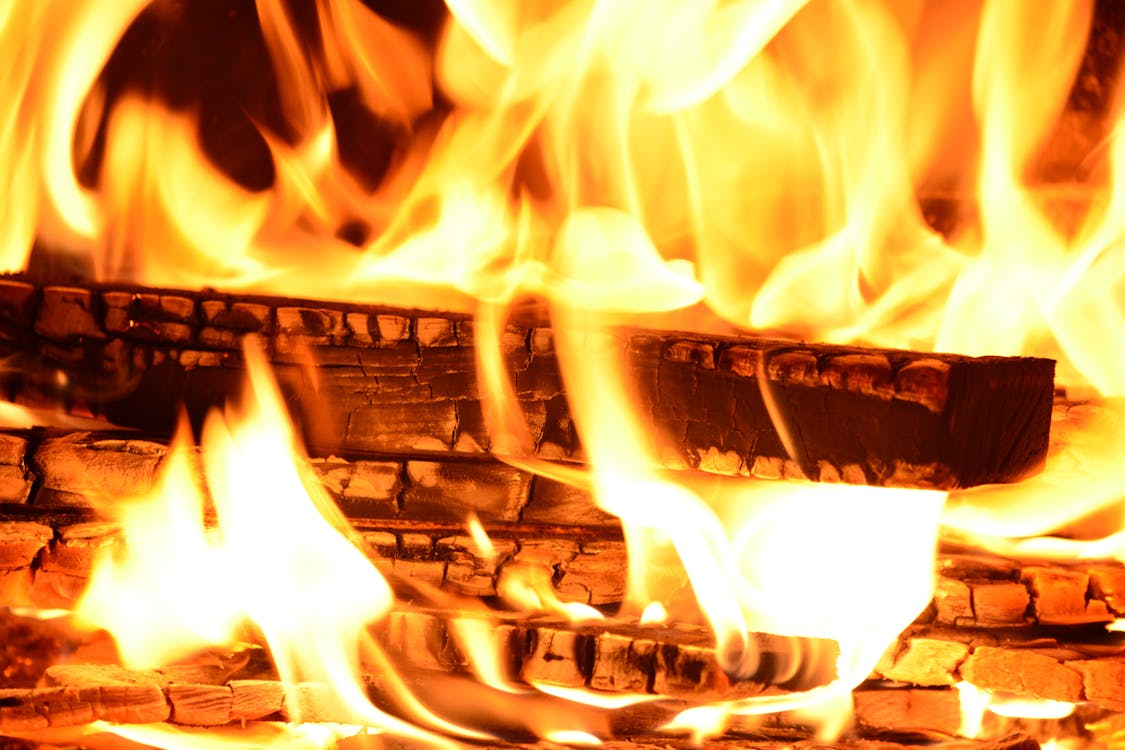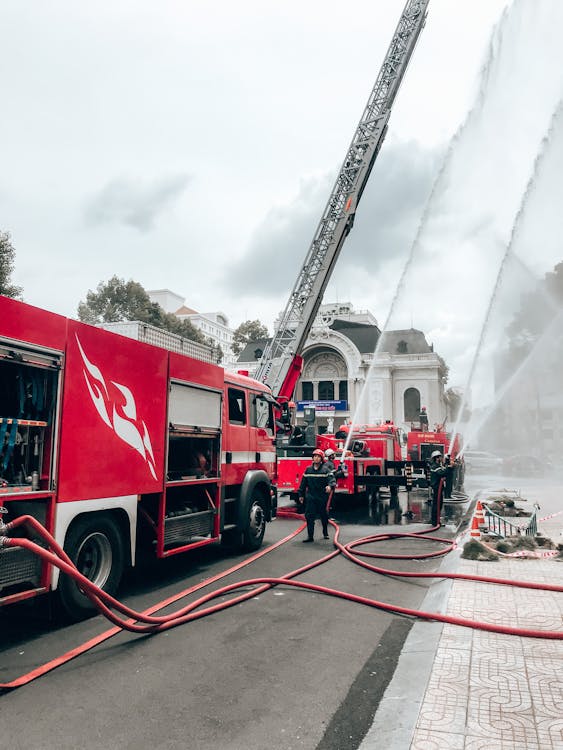Safeguard Your Living Space: The Ultimate Guide to Fireproofing Homes
According to the NFPA, over 350,000 homes experience structural fires annually. In the face of this alarming statistic, fireproofing homes becomes a crucial strategy, giving your home a powerful shield against potential threats.
Not only does fireproofing help prevent and control fires, but it also ensures a safer escape. The question is this: how do you protect your home from this hazard? That’s what we’ll explore in this article. So, stick around!
How to Fireproof Your Home
Several ways can help you safeguard your house against fires. These include creating a fireproof barrier, using fire-resistant material, installing fire alarms, and more!
While these methods won’t stop fires completely, they can slow down the burning process, increasing your safety.
Let’s discuss eight tips to help you protect your house from flames!
Create a Fireproof Barrier
Creating a fireproof barrier is an excellent way to manage external threats. Mulch, compost, leaf piles, and more are combustible materials. Believe it or not, they can start burning without using a flame.
During hot summer days, the heat can cause those gardening essentials to ignite on their own, a process known as spontaneous combustion.
Even if you store these piles away from your house, you can’t eliminate external mishaps, like ignited cigar butts near your lawn.
That’s when creating a fireproof barrier comes into play. Using heat-resilient material can help prevent such accidents from happening. Here are a few tips:
- Create a break line by lining your patios and driveways with gravel and concrete.
- Line 100 feet around your house with concrete and fire-retardant plants, such as lilac and hackberry.
- Always keep the barrier area clean by removing sheds and undergrowth.
Skip Wooden Decks

Wood can be a popular choice for decks for many reasons. It has a timeless aesthetic and can last for a long time with proper maintenance. Not to mention, you can find many budget-friendly options. All that sounds great, right?
Unfortunately, wooden decks may not be suitable if you live in a wildfire-prone area.
This material is a fire hazard. It releases gases that react with oxygen, causing combustion. Not to mention, the high organic material, such as cellulose, keeps the reaction going, causing dangerous fires.
For that reason, opt for materials like tile, stones, concrete, or brick for your deck. These materials do a better job of resisting fire than wood.
Likewise, frame your windows with metal to add a layer of defense against potential fire hazards. For further protection, consider installing double-paned glass.
Use Fireproof Materials for Exterior Walls
Choosing fire-resistant materials for exterior walls is a crucial step to fortifying your property against fire hazards.
While no building material is 100% fireproof, opting for non-combustible materials can enhance your home's resilience.
Whether it’s residential or commercial buildings, consider using cement, brick, gypsum, and brick for exterior walls. Additionally, use fire retardant paints, especially for exterior walls.
Don’t forget about the roofing and siding. Use metal or tile for the roof. As for the siding, consider bricks, stones, or stucco. All these materials don’t have fuel (organic material) to burn oxygen and start fires.
Build With Fire-Resistant Materials
Regardless of the precautions you take, building with fire-resistant materials is paramount for preventing hazardous fires. Like exterior walls, use bricks, gypsum, and fiber cement for constructing your house.
These materials are classified under Class A in the Flame Spread Rating Index. They can withstand flames for a specific time before burning.
Additionally, make sure to fortify basements or crawlspaces. These rooms contain electrical wiring, which can spark, causing dangerous fires. To avoid this hazard, here’s what to do:
- Insulate your crawlspace or basement with fire-resistant material, like gypsum or plywood.
- Seal all vents and cracks with fireproof caulk.
- Ensure there’s a wide enough window for evacuation.
- Store flammable objects away from electrical sources.
Install Fire Alarms
All the above methods aim to prevent fires from starting in the first place. Still, there’s a chance they occur. That’s when fire alarms come into play.
These devices detect fires either through smoke or heat. Afterward, they alert the residents using audible and visible alarms.
Not only that, but fire alarms notify authorities, ensuring your fire protection company arrives as soon as possible.
Aside from this device, consider installing sprinklers and smart HVAC systems. The former slows down the spread of deadly heat. As for the latter, it can detect outside smoke and automatically shut down. Consequently, it stops the heat from circulating in your house.
To get the most out of these systems, make sure to install them in every bedroom and floor in your house. Additionally, place them away from air vents and change the batteries every six months.
Ensure Emergency Access

As you know, emergency exits are crucial as they help you evacuate your building safely.
However, in the case of severe fires, these exits can be blocked. For that reason, you need to ensure your home has emergency access for firefighters. If a firetruck can’t reach your home, putting out the fire can be challenging—not to mention quite dangerous.
Make sure you have an easy-to-access driveway that’s sturdy enough to handle heavy firetrucks. Additionally, consider removing obstacles, like gates, from fire-prone areas.
Creating a clear pathway for firefighters not only facilitates response but also helps suppress the fire quickly, safeguarding your property.
Invest in a Fire Extinguisher
When it comes to home safety, fire extinguishers are indispensable. Ensure you have at least one extinguisher in the kitchen to control minor mishaps.
You should also place this safety equipment on each floor. Of course, ensure that you put it in an easy-to-access place and that everyone in your house knows how to use it.
Additionally, make sure to use the appropriate extinguisher for the emergency. As you might know, not all fire extinguishers are the same. They have an ABC rating, and each is used in different situations. Here’s an explanation of each class:
- Class F/K: for cooking oils and fats.
Harden Your Home
Safeguarding your home from potential fire hazards takes more than installing fire protection equipment. Here are a few tips to help harden your home:
- Frequently clean debris from your roof and gutters, as dry plant matter ignites easily.
- Clean your chimney regularly to prevent soot buildup.
- Inspect overhead power lines to ensure tree limbs are away from them. Call your power company if the trees hang above or grow between the power lines.
- Declutter your home from old clothes and fabric to reduce fire spread risks.
- Swap candles for safer alternatives like oil diffusers, and keep heaters away from flammable items.
FAQs
Q. What’s the difference between fireproofing and fire protection?
Although both terms may be used interchangeably, fireproofing and fire protection are two different strategies.
Fireproofing involves making an object less susceptible to fire. Using fire-retardant paint, building with non-combustible materials, and creating a fire-proof barrier are examples of fireproofing.
Fire protection, on the other hand, involves controlling fires and preventing them from spreading using fire alarms, sprinklers, and other similar devices.
Q. What is active and passive fire protection?
Passive fire protection involves structural measures that can help prevent fires. These include fire doors, fire-resistant paints, and more.
Active fire protection, on the other hand, is equipment that helps you fight fire. These include fire alarms, sprinklers, water hoses, and smart HVAC systems.
Wrapping Up
Fireproofing your home involves a blend of active and passive protection measures.
Creating fireproof barriers and building with resilient materials can help prevent fires from starting. Installing fire detectors, using extinguishers, and ensuring emergency access further add a robust layer of defense, stopping fires from spreading.
By following these tips, you safeguard your property and enhance its resilience. That way, you can enjoy peace of mind, knowing that your living space is well-prepared to face challenges!




